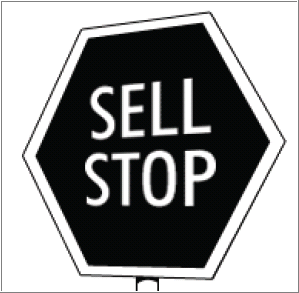 In “Missing the Point” I talked about the purpose of using sell stops, which is to limit downside risk and not to initiate a short position as one investor intended to do. I also said the following:
In “Missing the Point” I talked about the purpose of using sell stops, which is to limit downside risk and not to initiate a short position as one investor intended to do. I also said the following:
If you are a very aggressive investor, you could work without sell stops and only use the crossing of the trend lines as your last line of defense to cash out and head for the sidelines.
However, be aware that, depending on the current positions of the TTIs, it can be a long way down, and you will very likely turn any accumulated profits into losses in the process.
Reader Jon posted the below comment in response:
A great reminder about stop-losses. I am not sure I entirely agree with you that selling at the trend line will “very likely turn any accumulated profit into losses”. If you buy only when the index cuts above the trend line and sell when it cuts below it you will, by definition, realize profits equal to the increase in the trend line between these two moments in time!
You are absolutely correct, if you buy and sell exactly at these two points. However, reality is that investors move into the market even after a buy signal has been generated to try to take advantage of upward momentum. Or, new clients come aboard in my advisor practice during mid-cycle and need to have their assets deployed.
That’s where you obviously enter not at an optimal point in time, which is the reason to have sell stops in place to guard against the downside risk.
Another scenario that can cause issues is if you have a sharp rally, after a buy signal has been generated, which is followed by a sharp decline within say less than 3 months, your trend line will have moved up only by a small percentage.
If you happen to have invested in a sharply rising fund/ETF, which now follows the market reversal back down just as quickly, you may witness a 20% gain turn into a 2% profit as the trend line gets crossed to the downside. That’s were implementing a 7% sell stop has its advantages, since it would have locked in a gain of some 13%.
In any event, Jon’s point is well taken; just be aware that there is no perfect solution.
The ultimate goal is to avoid the big disasters like 2001 and 2008 even if you whipsaw a few times along the path. If you can just do that, you will be outperforming over 90% of all money managers and mutual funds.
